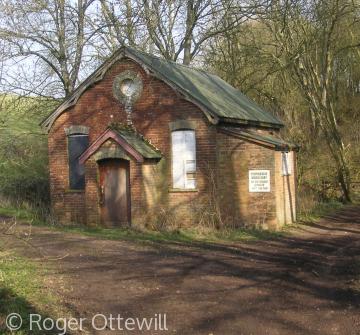Winslade Congregational Chapel

At the time of its opening in October 1888, the location of this relatively remote chapel was described as ‘a perfect little paradise.’ Although it ceased to be a place of worship in 1930 the building survives and is currently used by farmers as a storage facility. With a population of only 59 in 1901, Winslade might have been considered too small to support a Nonconformist chapel in addition to an Anglican church. However, being situated at a point where paths leading to Herriard and Ellisfield converge it was hoped to attract support from these two villages as well as Winslade. The chapel owed its existence to the generosity of two benefactors, the fifth Earl of Portsmouth, who donated the land, and Thomas Maton Kingdon, a Basingstoke ironmonger and a leading member of London Street Congregational Church, who paid for the building and its furnishings. At the turn of the twentieth century, the approach to the chapel was altered with the building of a substantial embankment to accommodate the Basingstoke and Alton light railway. This also meant that the village was no longer visible from the chapel. Nonetheless services continued to be held and there was also a Sunday school and a branch of the Band of Hope. Owing to its idyllic setting, and notwithstanding the railway embankment, the chapel was also a favourite place of worship for Congregationalists from further afield. Improvements were made to the building during the 1920s, with hanging lamps being provided to enable evening meetings to be held and crockery being donated to assist with the catering arrangements. In 1924 the men of the chapel carried out renovation work and redecorated the building, following which a formal re-opening was held in June. Despite these efforts, in the summer of 1930 the deacons of London Street decided to close the chapel during the winter months. Following this decision, the chapel never reopened. In 1931, the organ was transferred to the chapel at Ellisfield and the furniture removed. In 1935 the building was sold to the Portsmouth Estate for £35.
Content derived from research undertaken as part of the Victoria County History project




